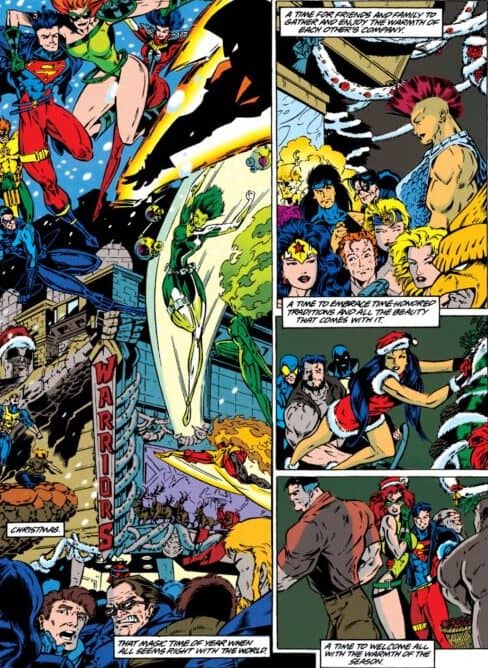***Contains Spoilers***
The Guy Gardner: Warrior solo series is a strange, chaotic, and oddly fascinating journey. It begins with Guy Gardner picking up the pieces after being booted out of the Justice League International (JLI) and losing his Green Lantern ring to Hal Jordan. Stripped of his previous identity, Guy becomes a vigilante, experimenting with different power sources—including Sinestro’s yellow power ring—and eventually finds himself wielding bizarre alien powers after a strange origin rewrite. Along the way, we see him running a bar, brawling with Lobo, clashing with Hal Jordan, and recklessly charging into situations with his usual brashness. It’s a book that had plenty of potential, but its execution left much to be desired.
Despite its flaws, there were some standout elements. For starters, this series gave Guy a chance to step out of the shadow of the Green Lantern Corps and establish himself as his own character. I liked the transition from his comedic persona in Justice League International to a more serious, even tragic figure. His bar, Warriors, was a fun and unique addition, serving as both a backdrop for fights and a symbol of his attempt to create a new identity. Speaking of fights, the battles with Lobo were wild, over-the-top fun, and fit Guy’s reckless personality perfectly.
The yellow power ring’s storyline was also intriguing, at least in concept. The trip to Qward, recruiting G’nort and Lobo for help, and the chaotic accidental invasion of Oa were memorable moments, even if the execution was uneven. The exploration of Guy’s childhood in “Yesterday’s Sins” was another highlight, offering some depth and context for why Guy is the way he is—abrasive, hot-headed, but with a surprising sense of loyalty. The series did introduce some cool powers for Guy later on, even if the constant changes made it hard to keep up.

Unfortunately, the series’ biggest flaw was its lack of focus. The storyline felt like it was constantly shifting gears, and Guy’s powers changed so often it seemed like the writers were just throwing ideas at the wall to see what stuck. This instability made it hard to stay invested in the narrative. The alien DNA revelation and subsequent powers were a strange direction for the character, and while it had potential, it felt more like a test run for a backstory rather than a fully realized idea.
The tone of the series was also inconsistent. While I appreciated the shift to a more serious Guy, the book often leaned too far into melodrama while still trying to hold on to its over-the-top action. This tonal imbalance made it hard to tell whether the series wanted to be taken seriously or embrace the campiness of Guy’s earlier stories.
In the end, Guy Gardner: Warrior is a decent one-time read if you’re curious about this period in Guy’s life, but it’s not something I’d revisit. It had potential—especially with its unique take on Guy’s character—but the uneven storytelling and constant changes to his powers ultimately held it back. For die-hard Guy Gardner fans, it’s worth checking out to see how he transitioned from his JLI days to his later, more grounded iterations, but for casual readers, it’s not essential. I liked it enough to finish it, but I wouldn’t recommend reading it again — two stars.
Feature Image Guy Gardner Warrior #17 cover art by Dan Davis and Mitch Byrd
Keep NewToComics.com running with a donation or shopping with through our affiliates—your support helps maintain the site and continue guiding new readers into the world of comics!


